- Blueprints
- Posts
- Blueprint #2: Setting your Customer Success team up for PLG wins
Blueprint #2: Setting your Customer Success team up for PLG wins
Turning scattered user data into one simple, actionable summary for the team.
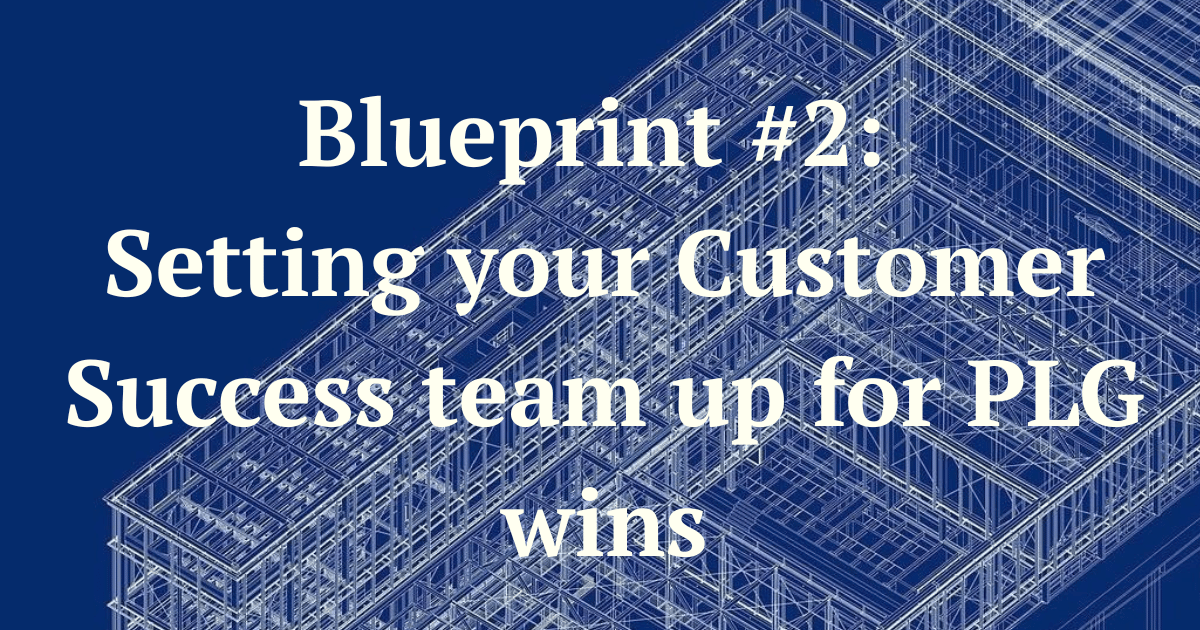
When a user on our free plan converts in-app, our team always gets excited.

There’s no sales call, no negotiation, no back-and-forth.
A user sees value and just…decides to buy. It feels like magic every time.
Sometimes, those users hit the ground running.
They immediately connect with their Customer Success Manager. They ask great questions. And they quickly become our favorite customers.
Other times, it’s a different story. The CS team struggles to get them onboarded.
Because these users didn’t go through the usual sales-led journey, there is less context on the team and what’s important to them.
When that happens, it’s a missed opportunity, right at the moment when momentum matters most.
That’s the problem I set out to solve this week.
When a free user upgrades, the CS team shouldn’t have to start from scratch.
Instead of digging through product data to figure out what a free user did and the features they used, they should get the full context delivered to them in a way that is fast, clear, and easy to act on.
This week’s workflow automatically pulls a user’s product activity, generates a summary, and posts it to Slack.
Problem to Solve
When a customer upgrades without talking to Sales, the CS team doesn’t know much about them.
The usual playbook doesn’t work. Without a sales call, it’s hard to tell what the customer needs.
The information is out there - scattered in product data, emails, and call notes - but it’s hard to find.
Difficulty Scale — 🟡 Medium difficulty
You’ll need to set up a multi-step Zapier workflow and connect a few tools (PostHog, Grain, Salesforce, OpenAI).
Step 1 - Trigger when a free user upgrades to a paid plan
It all starts in our #wins Slack channel, where we post notifications for every new customer.
When a user on a free plan upgrades, the workflow triggers immediately.
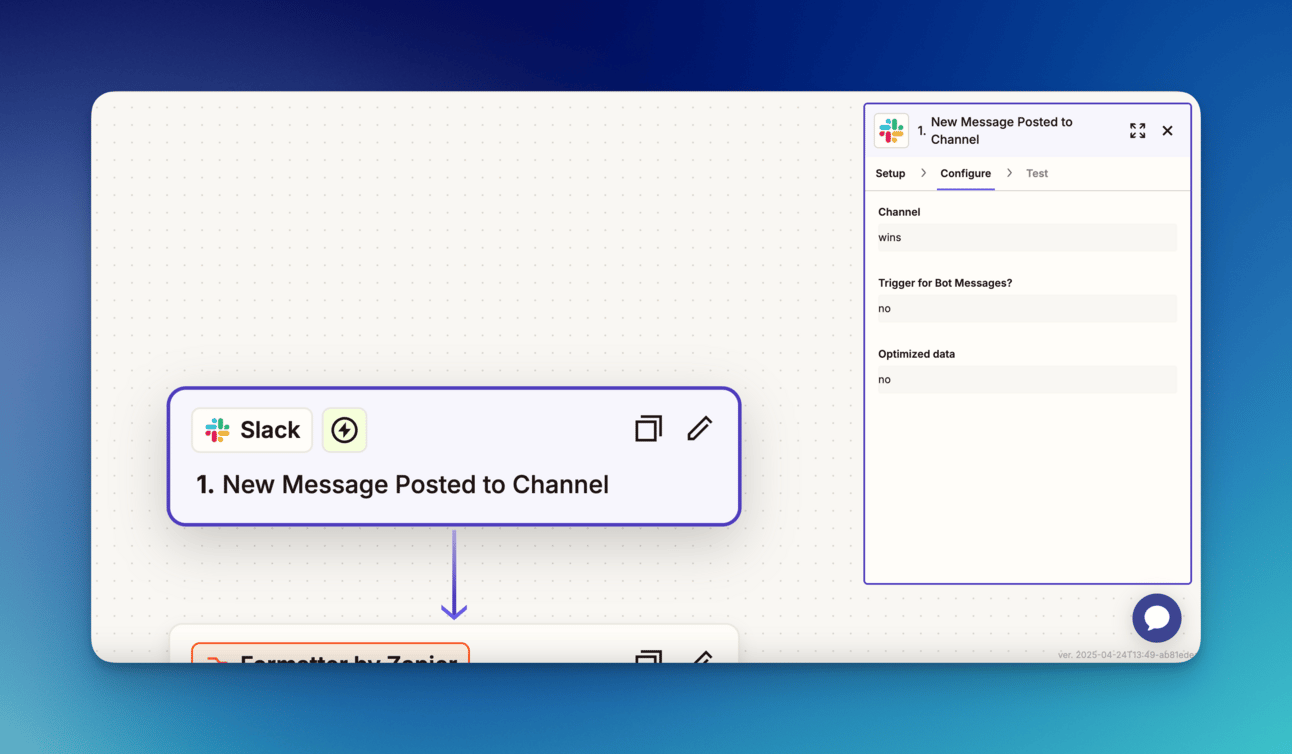
Step 2 - Determine the email of the user
Next, we need to know who the user is.
I used Zapier’s Formatter tool to pull the email address from the Slack message automatically.
This email is how we can figure out all the product data associated with the user.
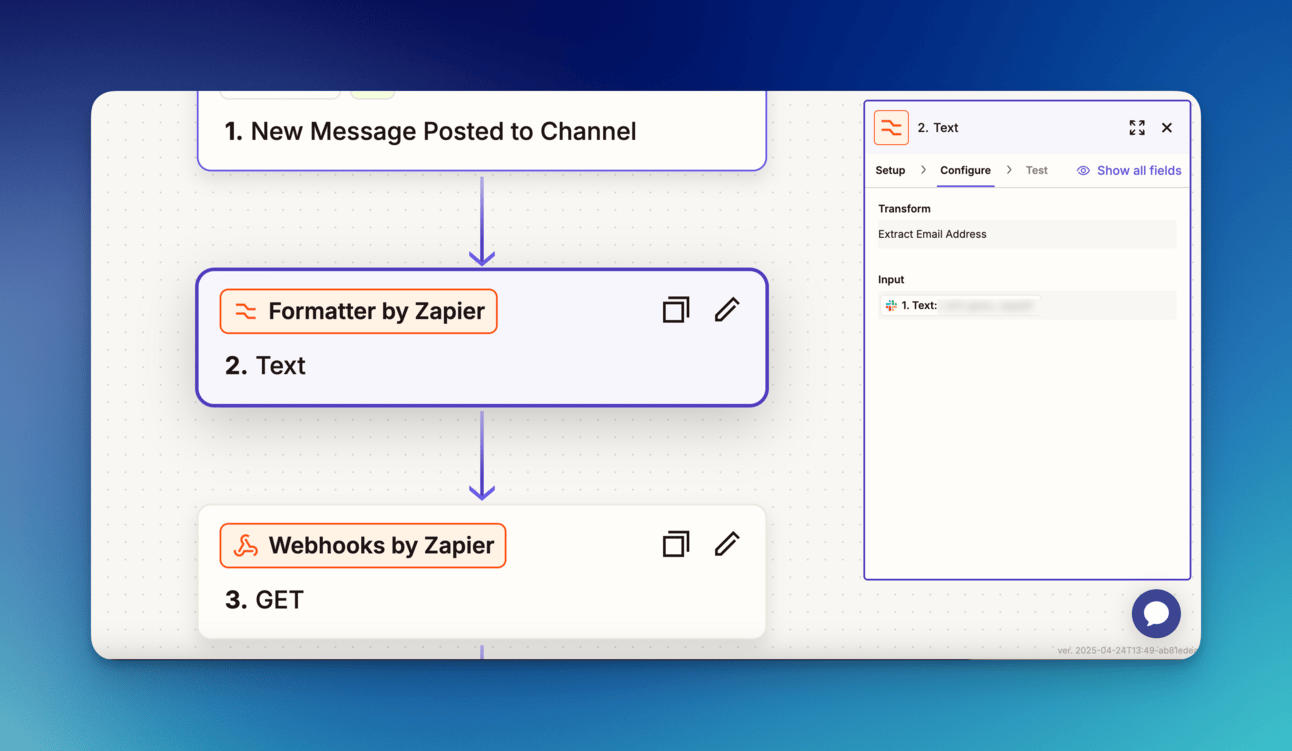
Calling all product marketers!
We are building the AI Playbook that every PMM needs.
My friend Yi Lin Pei, a PMM coach and one of the top voices in Product Marketing, is creating the first AI in Product Marketing Report that’s actually useful:
1) Real prompts
2) Real workflows you can use (including one from Blueprints! 👀 )
3) Real examples from product marketers
Take the 7-minute survey and you’ll get:
- Early access to the report in June
- A chance to win a free 60-minute coaching session with Yi Lin
- Get your workflow / quote featured to thousands of readers
Even if you're new to AI, she wants to hear from you.
Survey closes on May 2. 100+ PMMs have already taken the survey - help us reach 200!
Step 3 – Pull this user’s product data from PostHog
Once we have the email, we search for the user in PostHog.
Here’s what happens behind the scenes:
I set up a “webhook” step to PostHog to search for the user based on their email.
A webhook is a way for one system to send real-time data to another system as soon as something happens. In this case, from PostHog to ZapierA JavaScript snippet runs to retrieve the user’s
DistinctIDUsing that ID, I pull all of their event data: aka every action they’ve taken in the product
This will work with any product analytics tool where you can set up a webhook (not just PostHog).
I know have a full view of the user’s product journey: what they did, which features they touched, and the timeline of their activity.
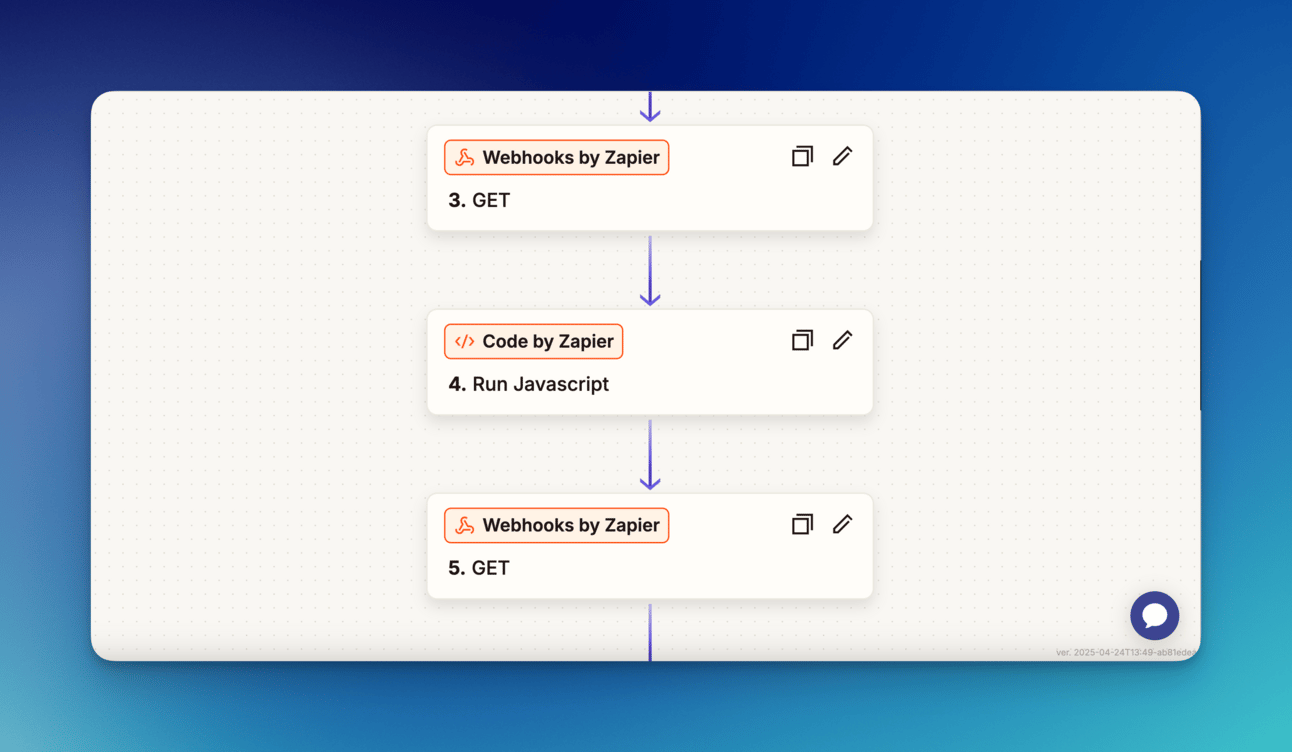
Learning #1
It was tempting to include every signal, but what the CS team actually needed wasn’t more data. It was a clear, actionable summary of the user’s product journey they could use immediately.
Step 4 – Add some more context from call transcripts and emails
Sometimes these users had brief touchpoints with Sales or Support before upgrading - answering a few questions, resolving an issue, or hopping on a quick call.
So I pulled in:
Old emails. I checked Salesforce for any activity tied to the contact or account, especially past emails from reps.
Call transcripts. I pulled this in from Airtable, where all of my call transcripts are. Every call gets logged with a transcript, making it easy to surface insights like this later (if you missed last week’s Blueprint walking through this, check it out here.)
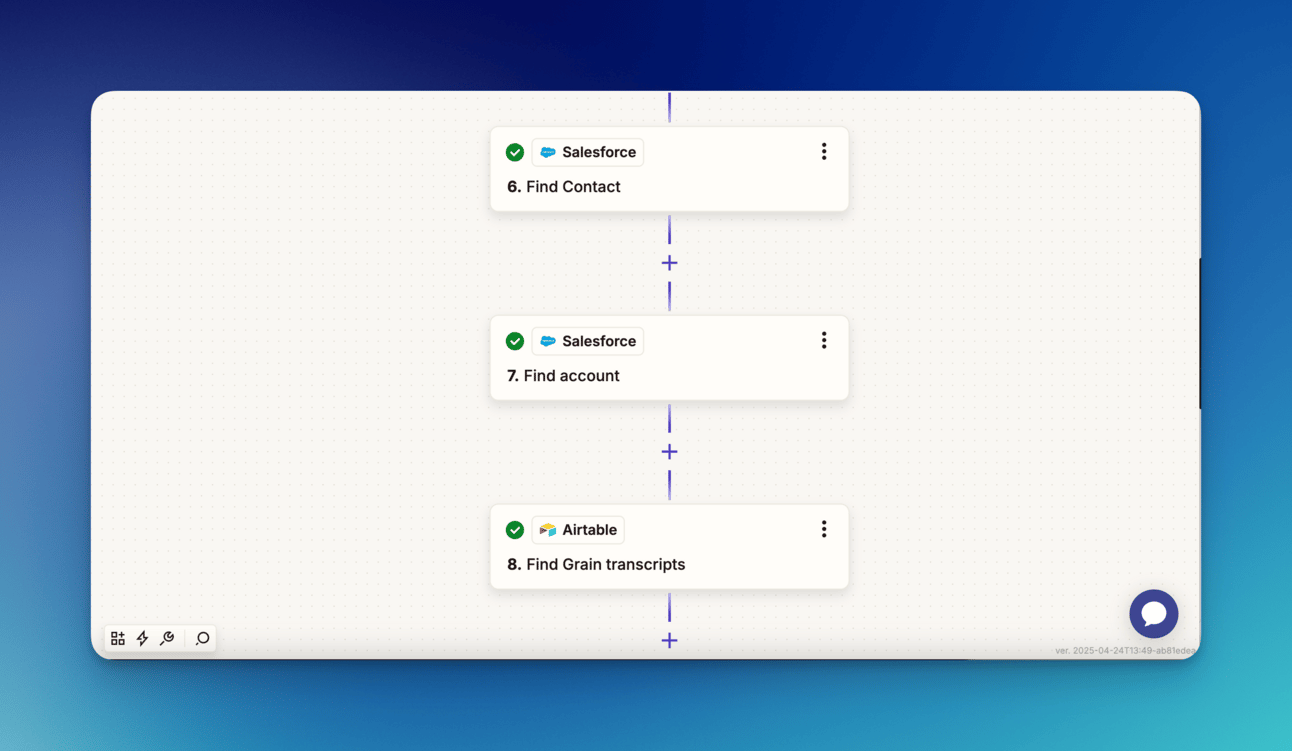
Step 5 – Create a final summary digest with OpenAI
This is where it all comes together.
We send the user’s product events, emails, call notes, and account context into an OpenAI prompt.
From that mix of raw events, messages, and conversations, the prompt generates a clear, concise story that gives CS instant context without the digging.
The final output looks something like this and appears on the same thread where CS hand off happens:
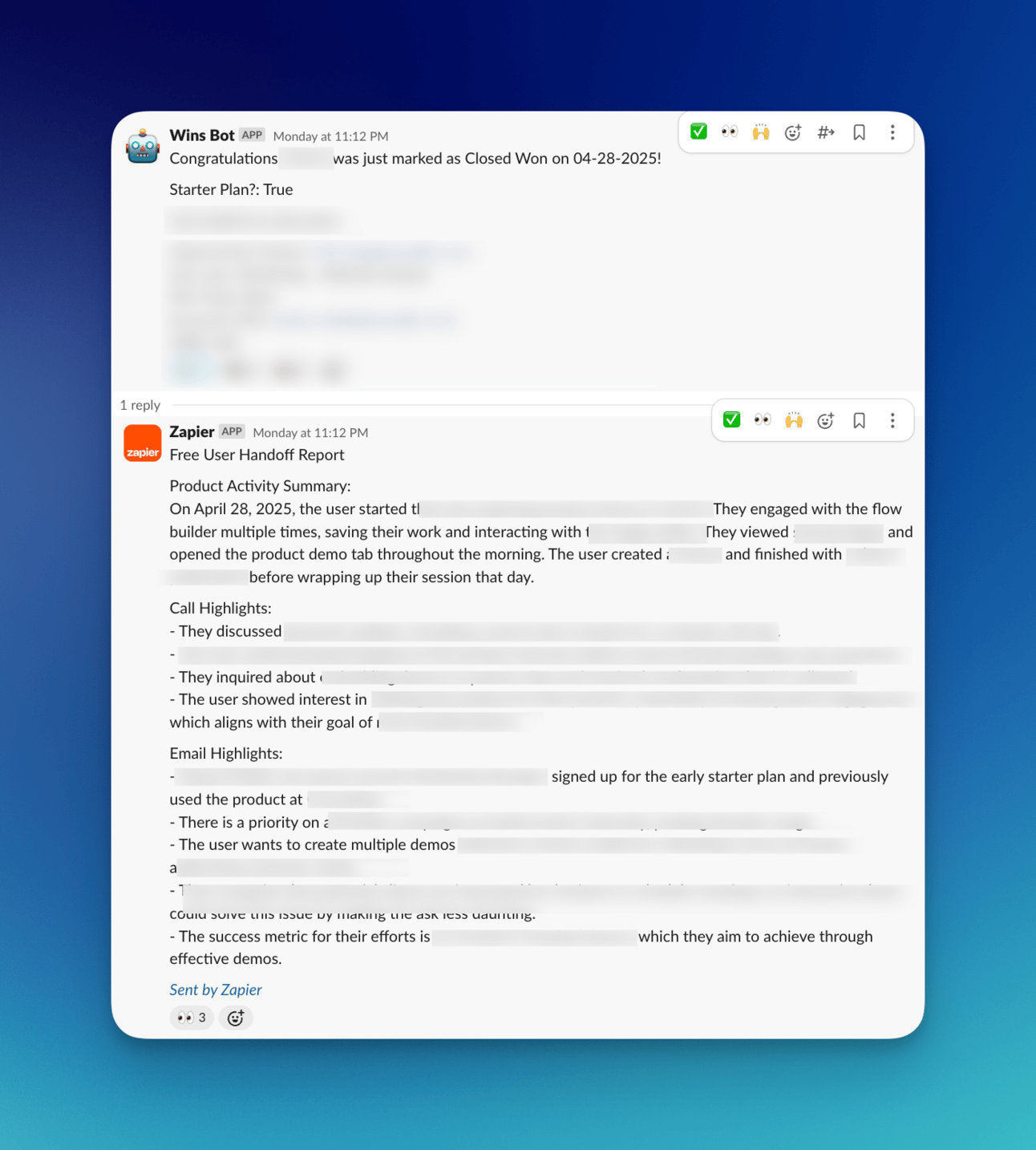
Learning #2
You can't summarize what you don't collect. The foundation (pulling clean product data, emails, and call notes) mattered more than tweaking the AI prompt in this case. A great prompt can't fix bad inputs.
Final thoughts
For new customers to succeed, the CS team needed to move fast, build trust, and offer help based on real context.
This workflow makes that possible.
It turned scattered signals into one simple, actionable story, freeing up the CS team to focus on helping customers win, not wasting time piecing information together.
Learning #3
The goal wasn’t to replace CS decisions, it was to arm them with the right context faster, so they could focus on strategy instead of hunting through product data, emails, and past conversations.
Reply